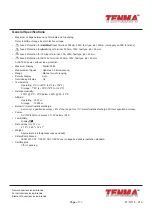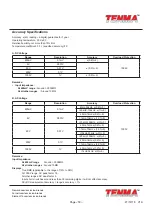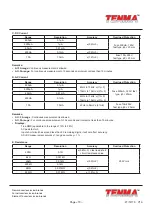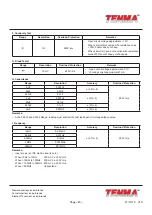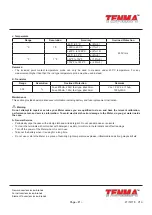
TM
TM
Page <7>
V1.0
27/12/19
Newark.com/exclusive-brands
Farnell.com/exclusive-brands
Element14.com/exclusive-brands
Number
Symbol
Meaning
10
Test of diode
11
The continuity buzzer is on.
12
Auto Range
Manual
Indicator of Auto or manual range
13
Display of maximum or minimum value.
14
Data output is in progress.
15
The battery is low.
Warning: To avoid false readings, which could lead to possible electric shock or
personal injury, replace the battery as soon as the battery indicator appears.
16
Transistor test is on
Measurement Operation
A. DC or AC Voltage Measurement (See figure 3)
(Figure 3)
Warning
To avoid personal injury, or damage to the Meter from electric shock, please do not attempt to measure voltages higher
than 1000V although readings may be obtained.
To measure DC/AC voltage, connect the Meter as follows:
1. Insert the red test lead into the
terminal and the black test lead into the
COM
terminal. If the measured value is less than
600mV, insert the red test lead into
mV
terminal instead and press
RANGE
button to select manual range 600.0mV mode,
the LCD displays “
MANUAL
” and “
mV
”.
2. Set the rotary switch to V ; press
SELECT
button to select DC or AC measurement mode.
3. Connect the test leads across with the object being measured. The measured value shows on the display. AC measurement
displays True RMS value.
4. Press
AC/AC+DC
button to measure AC+DC voltage’s true RMS.
Note
•
In each range, the Meter has an input impedance of 10MΩ except 600mV range has 3000MΩ . This loading effect can
cause measurement errors in high impedance circuits. If the circuit impedance is less than or equal to 10kΩ , the error is
negligible (0.1% or less).
• When DC/AC voltage measurement has been completed, disconnect the connection between the test leads and the circuit
under test, and remove the test leads from the input terminals of the Meter.

















